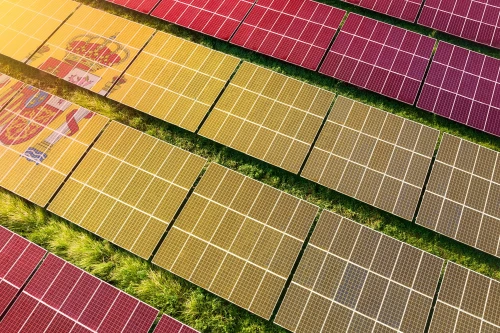Supply and demand in energy markets are governed by two factors: how much energy a power plant is happy to supply at a specific price—which we refer to as ‘supply’—and the amount of energy a customer is willing to purchase at that specific price, which we refer to as ‘demand’. It’s essential to manage the supply-demand risks. In an ideal situation, when these two factors are balanced, the supply-demand market is considered stable.
Understanding supply-demand risks in energy markets
Several elements can affect supply-demand risks in energy markets, both from the supply and the energy side of the relationship.
Factors affecting energy supply
Geopolitical Geopolitical events, such as wars or political tensions, can significantly disrupt energy supply. Strained relations between key energy-producing and consuming regions often lead to price fluctuations and market instability.
Climate change can also affect energy supply, with particular regard to renewable energy. Climate change can affect renewable energy supply in a number of ways. Extreme weather events, such as storms due to climate change, can cause damage to renewable energy equipment. This damage can lead to infrastructure constraints preventing energy from being produced during downtime for repairs, which decreases supply in the market. Energy production bottlenecks can also occur when extreme climate change prevents energy from being generated, for example in the case of extreme rain due to climate change which can prevent solar power from being generated, causing weather-related supply shocks.
Factors affecting energy demand
Industrial energy consumption can increase energy demand because certain sectors—including heavy industry and manufacturing—can require huge amounts of energy as part of daily operations. Unfortunately, these types of energy demand often aren’t suitable candidates to be powered by renewable energy, meaning they rely heavily on fossil fuels.
Depending on the time of year, we can see seasonal variations in energy demand, with peak demand periods for businesses and consumers occurring during certain times of year, which puts more pressure on the grid. This can include the summer months, which put increased pressure on the grid through a demand for energy for air conditioning. The same can happen in the winter months, where demand is increased for heating requirements.
As the growth of electrification increases, our reliance on electricity to power our vehicles is likely to change, as are our energy consumption patterns. If electricity generated from renewable power can fulfil the demand for this electrification, we can begin to ease our reliance on fossil fuels for combustion fuel engines.
Challenges in balancing energy supply and demand
The key to balancing energy supply and demand is to try to mitigate the volatility surrounding the transaction.
Energy price volatility
The energy market is inherently volatile , influenced by both renewable and traditional fuel sources. Renewable energy fluctuations stem from weather unpredictability, while geopolitical tensions, climate change, and policy shifts impact fossil fuel markets. Price spikes in energy can significantly affect consumers and businesses, leading to increased living costs and financial strain, sometimes forcing businesses to shut down due to unaffordable operational expenses.
Renewable energy integration risks
It can be challenging to integrate renewables into the energy grid because of the intermittency of the energy type. This is primarily because renewable energy is not as reliable a source of energy as traditional fuels because many renewable power sources rely on the weather to generate energy. Wind and solar power are fully reliant on the weather, with wind plants only able to generate energy when certain levels of wind speed are achieved. Solar power can only generate energy with a sufficient amount of sunlight, with excess levels of heat also preventing solar panels from generating energy.
This intermittent nature of renewable energy reinforces the need for grid stability, which could be achieved by flexible backup solutions such as battery storage.
Infrastructure and grid capacity constraints
As renewable energy becomes more advanced, we begin to see the incompatibility of combined legacy and modern technology into one grid.
Dispatchable sources of energy are energy sources that can be turned on or off depending on demand for energy.
Non-dispatchable sources of energy - usually renewable energy - need a longer lead time to dispatch energy i.e. they can’t be turned on or off.
These two types of energy production usually require different infrastructures to deliver energy; therefore, combining these types of energy sources can be a challenge for the grid. Investment challenges in expanding energy capacity are also real problems - upgrading the grid is an expensive and complex task.
Strategies for managing supply-demand risks
Several financial mechanisms can help manage supply-demand risks—we examine some of the crucial ones.
Advanced forecasting and data analytics
Energy demand prediction can help us to predict when there may be periods of high renewable energy supply or dips in renewable energy, helping to meet high demand. This method involves collecting data from the health of a renewable plant, usually involving multiple sensors monitoring areas of the plant connected up via the Internet of Things (IoT). This data is processed using data analytics software, which is then analysed to identify patterns of high energy output. Artificial intelligence (AI) can then be employed to identify patterns and create algorithms to predict when high-output periods might occur, improving real-time energy market decision-making.
Energy storage and demand response solutions
Energy storage is one method to keep demand response to energy supply stable. One of the crucial energy storage methods is battery storage, which stores energy from intermittent sources such as wind and solar during high-output periods and stores them to support the grid in low-output periods. Pumped hydro is also an important solution to demand response - it allows water to be used at a storage system and released to generate hydroelectricity during periods of low rainfall.
Managing supply-demand risks in energy markets requires advanced forecasting, infrastructure upgrades, and storage solutions to ensure long-term stability.


